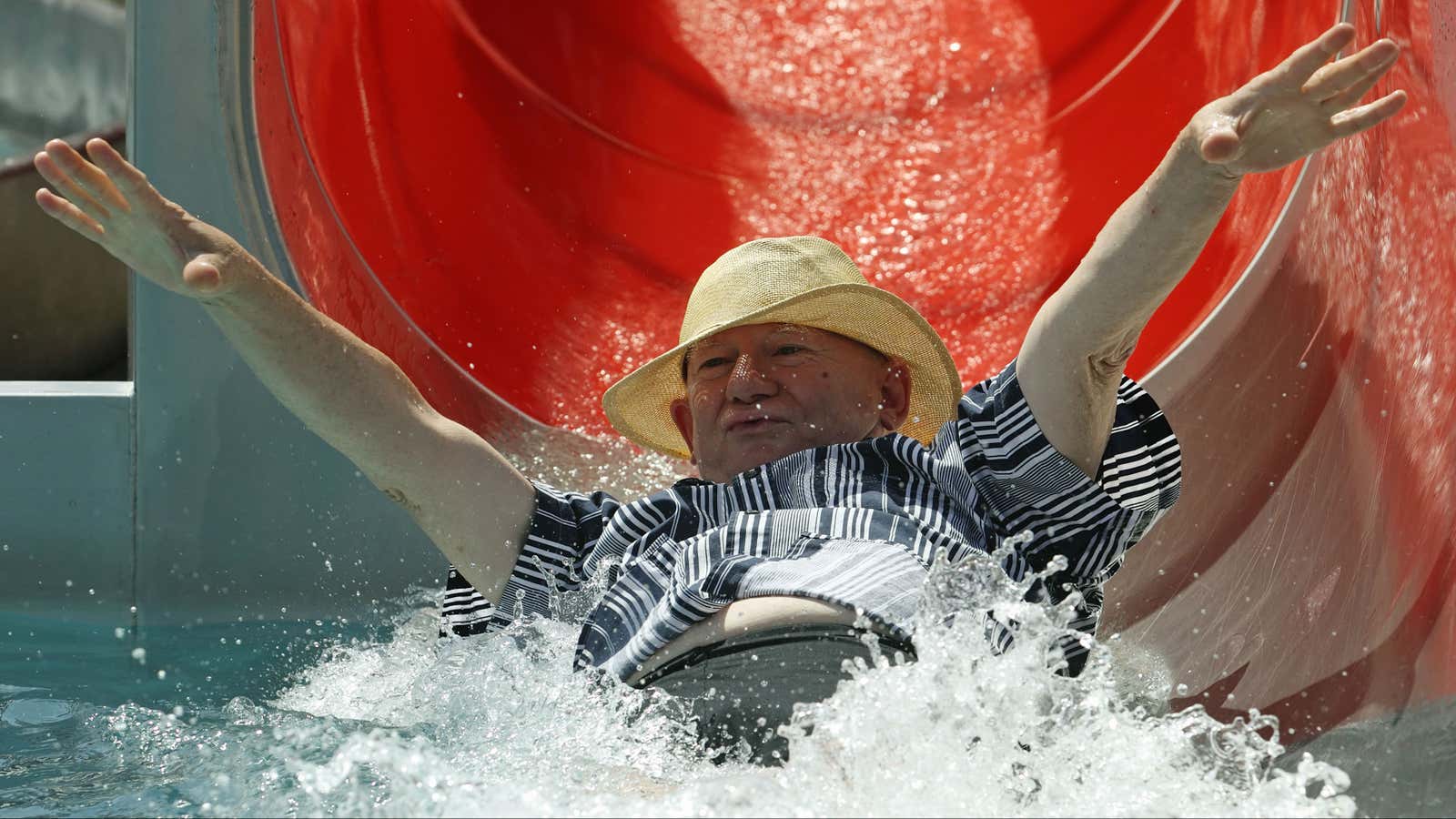Of all the tasks we try to schedule into our days, physical activity is the one most likely to get pushed indefinitely to tomorrow.
Earlier in June, scientists at the National Institute on Aging published (paywall) the results of a study on the daily activity of Americans as young as six years old to adults up to 84 years old. The team analyzed data from accelerometers, wearable devices that pick up any kind of movement, from over 12,500 participants that participated in US Centers of Disease Control surveys between 1999 to 2014. All of the participants wore these movement trackers for an entire week, except in the shower and while sleeping.
The resulting data show that, generally, activity patterns followed a clear curve: six-year-olds were the most active, but as the years went by, they moved around less and less until they hit 19, at which point they had the same activity levels as people who were 60 years old. Folks in their 20s seemed to move around a bit more than folks in their late teens, and activity actually increased slightly in the early 30s, but at 35 overall movement decreased once again, and never recovered.
“At 60-plus, many people have health issues that might cause a restriction in movement,” Vijay Varma, a researcher at the National Institute of Aging and lead author of the paper, told the Washington Post. But surely the majority of teens shouldn’t have these physical limitations. In fact, they should be at their peak fitnesses. “[The study] suggests that the social structures in place may not be supporting physical activity,” he says.
When it comes to daily physical activity, an obvious difference between kids and older teens and adults is that kids in school have recess, a glorious 20 to 30 minute break in the day in which they’re usually forced to go outside even if they don’t play on any organized sports team. (They also may squirm around in their seats more than adults; squirming and fidgeting still count as calorie-burning movement.)
But as kids grow up, that scheduled physical and mental break disappears. They take harder classes, and although by the time they reach college they typically have less structured time during the day than they used to, they have more to do. Work, for school or otherwise, usually involves sitting in front of a screen of some sort. And when people aren’t working, they’re probably unwinding watching TV or scrolling through a social media app on their phone. Some estimates suggest that Americans spend upwards of 10 hours a day staring at a screen. Unless you’re watching at a gym, that’s time spent sitting.
The small uptick in activity for people in their 20s can be at least partially explained by the shift from school to the professional realm. More of their activity occurred in the morning, which suggests a morning commute (compared to rolling out of bed to get to class). But even with this slight increase, overall movement is still lower than it is at its peak during childhood, and then continues to decline with age.
Inactivity can cause a person to become overweight, which puts you at risk for all sorts of health complications from metabolic and heart diseases. And although recess doesn’t necessarily mean exercise—the researchers found that about 25% of boys and 50% of girls aged six to 11 still were falling short of the World Health Organization-recommended hour of vigorous activity per day—it’s still more movement than most physically able adults get.
Although the authors don’t suggest any specific intervention to get adults to be more active, we came up with one of our own: Why not literally force activity into adults’ days, like we do children, with a workday recess?
We schedule so much into our days to try to keep our personal and professional commitments. Adult recess could be just another one of these commitments. Instead of forcing ourselves to carve out some of our free time for a workout, it could be built into the workday. Think of it like an all-staff meeting where the only thing on the agenda is being away from your desk.
In addition to making sure we all are a little more active, adult recess could be hugely productive. Taking a walk and playing have both been shown to make people think more creatively, and even taking time to do nothing at all can be an important reboot for maintaining overall momentum at work. “Wasting time is about recharging your battery and de-cluttering,” Michael Guttridge, a psychologist who studies office behavior, told Quartz. Plus, with a scheduled recess, we’d all be less likely to get burned out over time. Workers who quit entirely are like the ultimate wrench in the gears that get things done.
If your manager isn’t willing to instate office recess, it’s certainly worth considering for yourself. You’ll be a more active person, and maybe even a better employee for it.
